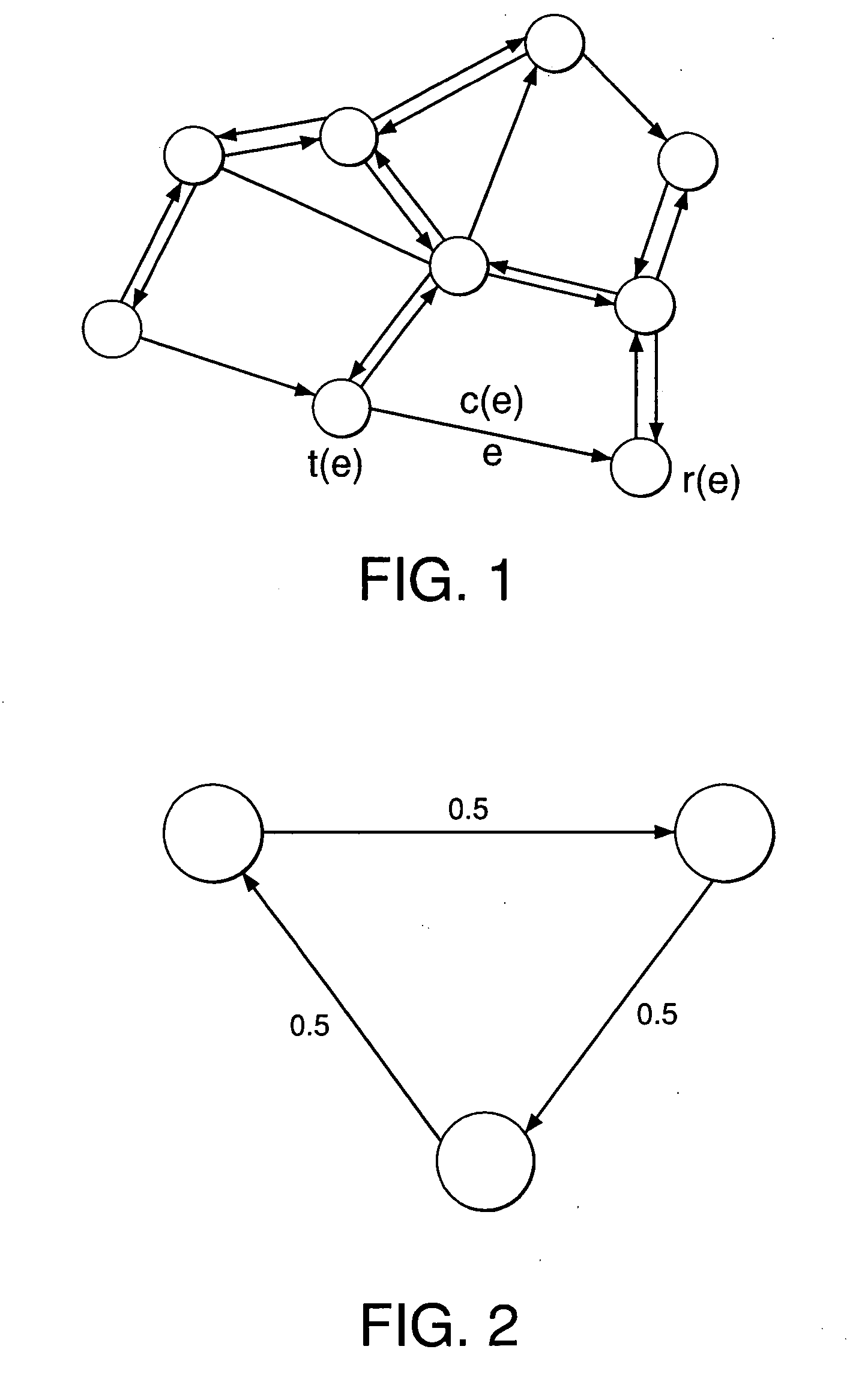Characterizing achievable flow rates in multi-hop mesh networks with orthogonal channels
a flow rate and orthogonal channel technology, applied in data switching networks, multiplex communication, wireless communication, etc., can solve the problems of limited communication capabilities of wireless nodes and the number of neighbors that these nodes can communicate with simultaneously
- Summary
- Abstract
- Description
- Claims
- Application Information
AI Technical Summary
Benefits of technology
Problems solved by technology
Method used
Image
Examples
Embodiment Construction
[0025] A node that does not have a duplexer operates in half-duplex mode, i.e., the node can either transmit or receive in each time slot, but cannot both transmit and receive in the same time slot. A node that has a duplexer can operate in full-duplex mode, i.e., the node can transmit and receive in the same time slot. In the context of the present invention, a half-duplex network is one that has only half-duplex nodes, and a full-duplex network is one that has at least one full-duplex node.
[0026] Developments in Code-Division Multiple Access (CDMA) and Multiple-Input, Multiple-Output (MIMO) wireless systems have enabled wireless nodes to engage in simultaneous communication on multiple channels. While, theoretically, nodes can simultaneously transmit and receive using a full-duplex transceiver, as a practical matter, system design constraints might restrict nodes to half-duplex operation. In one embodiment of the present invention, the full-duplex and half-duplex cases are separa...
PUM
 Login to View More
Login to View More Abstract
Description
Claims
Application Information
 Login to View More
Login to View More - R&D
- Intellectual Property
- Life Sciences
- Materials
- Tech Scout
- Unparalleled Data Quality
- Higher Quality Content
- 60% Fewer Hallucinations
Browse by: Latest US Patents, China's latest patents, Technical Efficacy Thesaurus, Application Domain, Technology Topic, Popular Technical Reports.
© 2025 PatSnap. All rights reserved.Legal|Privacy policy|Modern Slavery Act Transparency Statement|Sitemap|About US| Contact US: help@patsnap.com



